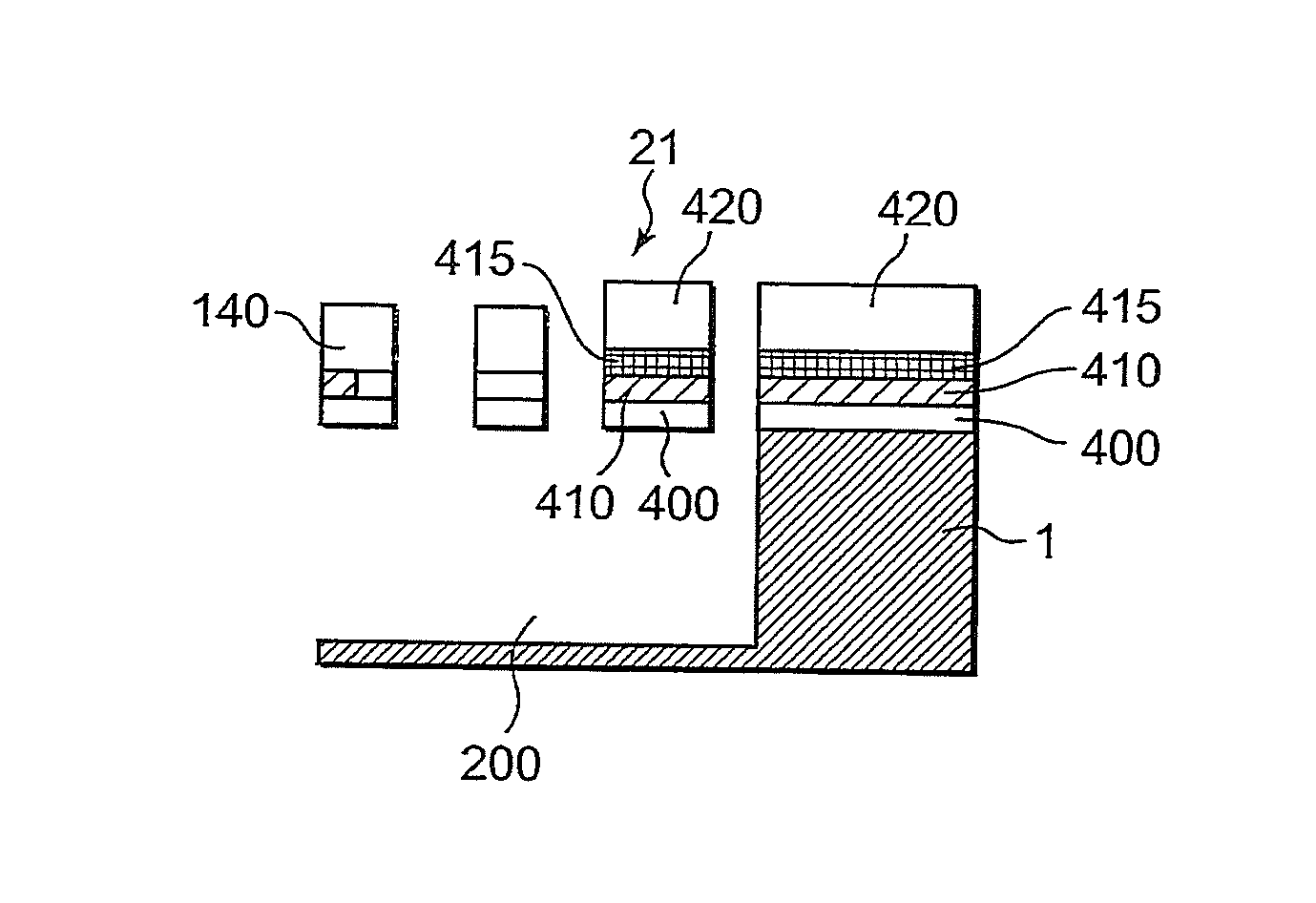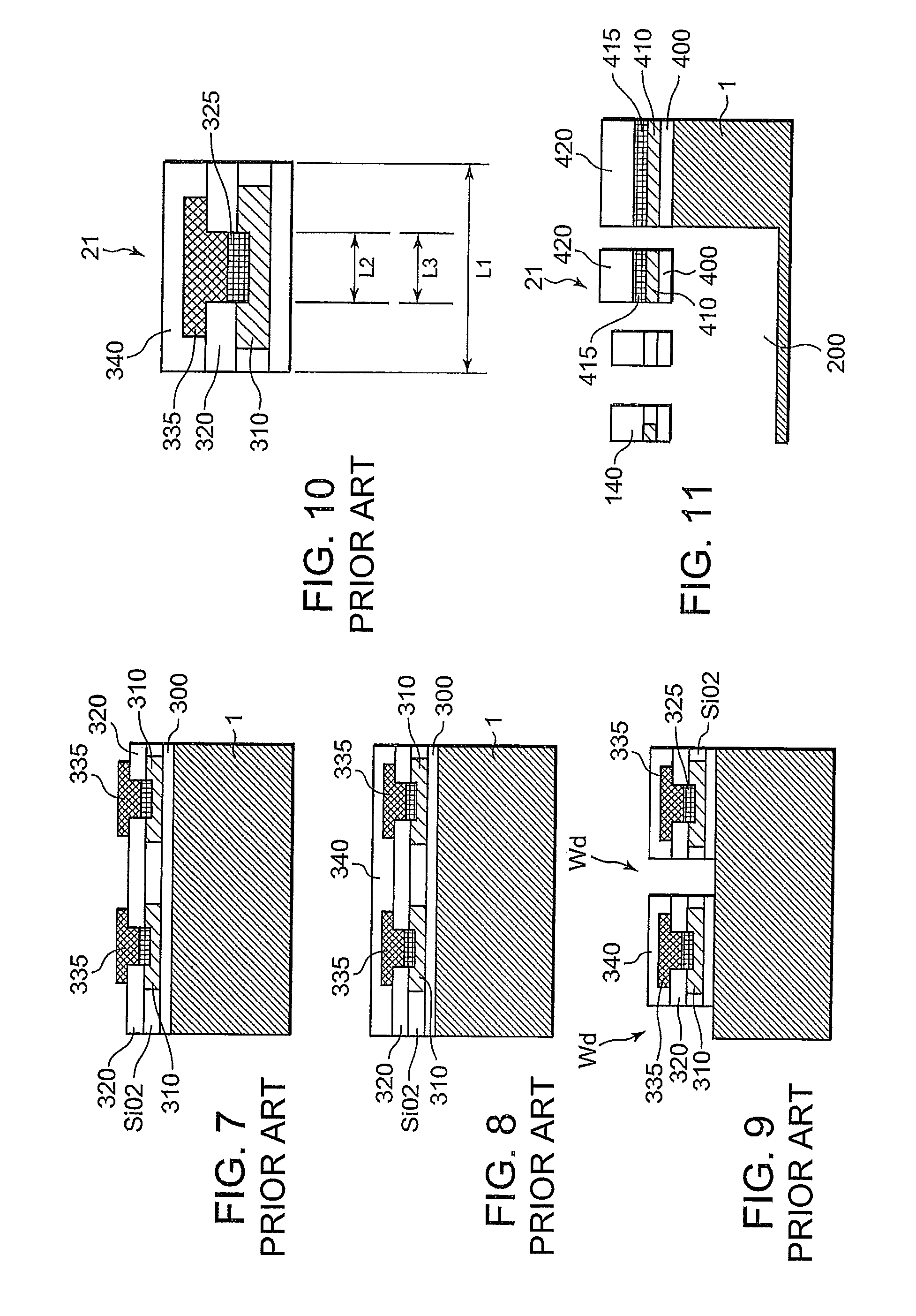Infrared detecting device and manufacturing method thereof
a technology of infrared detection and manufacturing method, which is applied in the direction of optical radiation measurement, instruments, material analysis, etc., can solve the problems of large size and high cost, cumbersome maintenance, and the inability to make so thin beam portions, so as to reduce resistance and cost
- Summary
- Abstract
- Description
- Claims
- Application Information
AI Technical Summary
Benefits of technology
Problems solved by technology
Method used
Image
Examples
Embodiment Construction
[0070]An infrared detecting device illustrative of a preferred embodiment according to the present invention will be described in detail with reference to the accompanying drawings.
[0071]FIG. 11 is an enlarged partly sectional view of an infrared detecting device of the present embodiment and shows particularly a sectional structure (corresponding to a developed section of a spot cut along line X-Y of FIG. 1) of a beam portion 21. The beam portion 21 is provided, using an SOI substrate 1, over an embedded silicon oxide film 400 embedded therein and configured by a wiring corresponding to a laminated body of a silicon film 410 and a metal silicide 415 provided thereon, and a silicon nitride film 420 (protective film) provided thereon. The largest point of difference between the structure according to the present embodiment and the conventional structure in this case resides in that a silicide region exists inside the form of a beam portion to be described later in a conventional meth...
PUM
 Login to View More
Login to View More Abstract
Description
Claims
Application Information
 Login to View More
Login to View More - R&D
- Intellectual Property
- Life Sciences
- Materials
- Tech Scout
- Unparalleled Data Quality
- Higher Quality Content
- 60% Fewer Hallucinations
Browse by: Latest US Patents, China's latest patents, Technical Efficacy Thesaurus, Application Domain, Technology Topic, Popular Technical Reports.
© 2025 PatSnap. All rights reserved.Legal|Privacy policy|Modern Slavery Act Transparency Statement|Sitemap|About US| Contact US: help@patsnap.com



